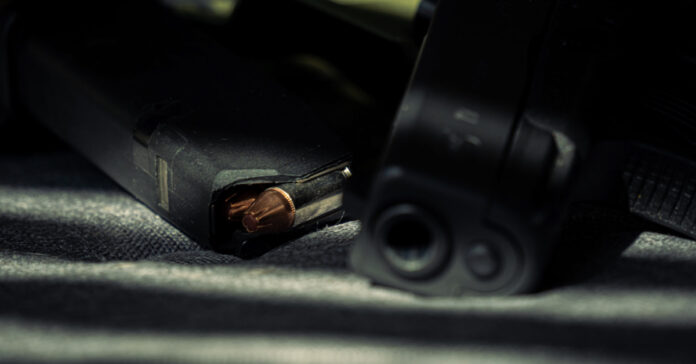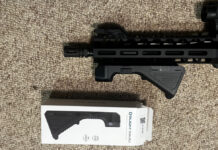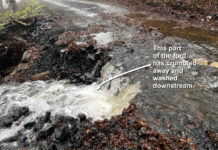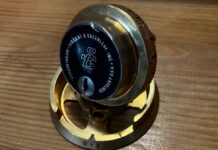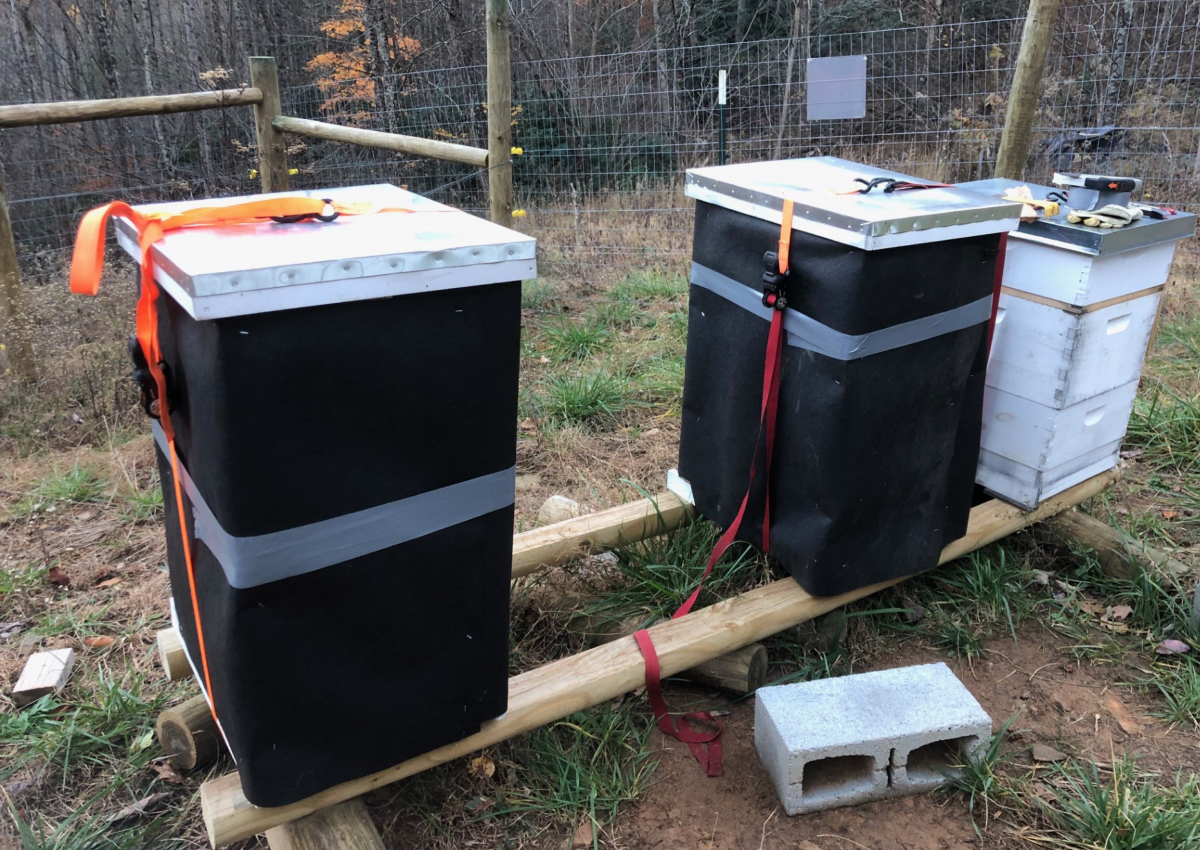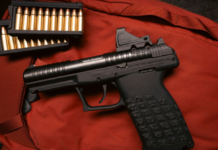I recently upgraded my carry gun from a Glock 23 to a Glock 48 with a Holosun 507 optic with a green dot. I stuck with Glock because I am a died-in-the-wool Glock guy. I know the Glock inside-out, I’ve shot them in competition, and I trust them. I would consider a Sig or a 1911, but not much else.
I picked Holosun because I have used their optics for five or six years and I trust them. I selected a green dot over red because they are brighter and are reportedly better for people with an astigmatism. So far, I can’t complain about either.
9mm vs .40
I have resisted going to 9mm because I have a great deal of infrastructure built up around the .40 caliber Glock, which I have been carrying for close to 30 years. Not only do I have at least three dozen .40 caliber Glock magazines, I have several thousand rounds of .40 and a full reloading set up, included powder, brass and bullets. I also have multiple pistols and a carbine that take the Glock .40 magazines.

When 9mm bullets had reached the point that their performance was as good as the .40, I didn’t see a reason to change. But when I was having back problems, the weight difference between the larger .40 Glock and the thinner, lighter single stack 9mm won me over. When they have loaded magazines inserted, the Glock 48 weighs 21 percent less than a Glock 23 and 32 percent less than a Glock 22.
It also helps that the thinner magazines are impossible to confuse with the thicker double stacks. I am not in any danger of loading a 9mm Glock 40 magazine in my .40 Glock or vice versa. Had I switehed to a Glock 19, that would be a potential safety issue.
I carry 115 grain Hornady Critical Defense and practice with 115 grain ball ammo. And when you change to an optic, you need to practice.
The Dot
I made the switch to an optic because I finally admitted to myself that as my eyes age, it was growing increasingly difficult to shoot well with iron sights. I had come to this realization for rifles eight years ago when I was testing out AR-15s. I thought the gun with the red dot was more accurate, but after some experimentation, I realized my groups were significantly tighter when red dots or magnifying optics than iron sights and I started equipping most of my long guns with optics.
Because pistol targets are so much closer, I only started experiencing accuracy problems using pistols within the past year. If I wear my reading glasses, I can see the front sights just fine. It isn’t fuzzy at all, and the group sizes decrease. The odds I’m wearing my reading glasses when called upon to use my defensive pistol are low, however, unless someone bursts into the house and tries to cap me while I’m in my easy chair.
With iron sights, I can still hit center of mass on an IPSC target at 25 yards, but my groups are large enough that I am not comfortable taking a head shot with a pistol at that range. For my safety and the safety of those around me, I want to be capable of making precision shots if called upon to do so. The dot helps me do so.
Unfortunately, a high-quality optic costs almost as much as the gun. I also needed the conversion plate to allow my Holosun to fit on the Glock MOS slide cut.
Finding the Dot
When I was an active USPSA shooter, I shot an STI super .38 1911 with a C-MORE red dot when I shot in the open class, so I had some experience with dots to fall back on. Finding your dot comes down to the consistency of your draw, and I that requires repetition. Happily, I adapted much faster this time around than I had back then. Of course, I still want to practice because not every shooting situation will allow you to make that perfect draw.
If your optic has a circle-dot aiming point similar to the Eotech “donut of death,” you can use that to help you find the center dot. The circle is 32 minutes of angle while the dot is 2, so it is easier to find the circle. Also, if the circle covers 32 inches at 100 yards, it covers 8 inches at 25 yards and 3.2 inches at 10 yards. The secret here is if you are aiming at the center of mass on a large humanoid target, you don’t need the dot. Put the circle on the target and fire. So what if you have a 3.2 or 4-inch aiming point? That should still get the job done and he who hits first often wins a gun fight.
Use the dot if you are aiming at part of their head sticking up behind cover. Use the dot if you are shooting their ankle from under a car or making another precision shot. But if the bad guy is charging at you from 10 yards, put the circle on his center of mass and fire, working your way up with each shot until he is no longer a threat.
If red-dot optics can improve the accuracy for cops, many of only qualify once per year, think of how well they can help a serious shooter who practices.
Capacity and Reloads
I carry one spare magazine for the Glock. Right now, that means 10 rounds in the gun and 10 rounds in my pocket. With the model 23, it was 28 rounds, a 13-round mag in the gun and 1 5-round Glock 22 mag as my reload.
Stepping down from 28 to 20 is enough to make me think about carrying two magazines, but where will I put it? I have a spare magazine in my vehicle and another spare in my EDC backpack. So I can resupply, but it anchors me to the car unless I grab it when I bail out. When I would carry the Glock 23 or 22, I had five spare magazines in the car. I have only six magazines for the Glock 48; I need another six.
The Call of the .40
I am not retiring the .40. There will be times when I revert to it. For example, if I am heading into a situation where I think 15 or more bullets is necessary, I’ll carry the 40. If I ever felt the need to carry two Glocks, they would have to be 40s because I only have the one 9mm, and I want magazine commonality. For example, on that last shopping trip after the collapse has started, I’ll wearing body armor and carrying multiple .40 caliber Glocks.
If I am carrying my Keltec sub 2000 carbine, which uses the .40 Glock magazines, it would be stupid to carry a 9mm pistol. One reason I got the carbine was to have ammunition commonality. So when I have that folded up into my pack, there will be a .40 Glock on my hip.
In bear country, a .40 is a better choice than smaller, lighter 9mm bullets. For this scenario, I load the magazines with alternating flat-point 180 grain bullets and hollow points. This gives me some bullets that penetrate and some that expand. As long as I get good hits, that should be a deadly combination on a bear. And in the woods, over penetration isn’t much of an issue.
But that easy-shooting 9mm Glock model 48 with a green-dot optic is now my daily carry. It also makes me want to get a dot for either the Glock 23 or Glock 22. I just have to wait until I can afford one and then decide whether to mill an existing slide or buy a new slide. I guess a prepper’s work is never done.

